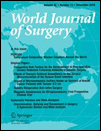What Patients Look for When Browsing Online for Pancreatic Cancer: The Bait Behind the Byte
Alessandra Storino and Camila Guetter have contributed equally to this work.
Abstract
Background
Suitability is a patient-centered metric defined as how appropriately health information is targeted to specific populations to increase knowledge. However, suitability is most commonly evaluated exclusively by healthcare professionals without collaboration from intended audiences. Suitability (as rated by intended audiences), accuracy and readability have not been evaluated on websites discussing pancreatic cancer.
Methods
Ten healthy volunteers evaluated fifty pancreatic cancer websites using the suitability assessment of materials (SAM instrument) for the materials’ overall suitability. Readability and accuracy were correlated.
Results
Ten recruited volunteers (ages 23–63, 50% female) found websites to be on average “adequate” or “superior” in suitability. Surgery, radiotherapy and nonprofit websites had higher suitability scores as compared to counterparts (p ≤ 0.03). There was no correlation between readability and accuracy levels and suitability scores (p ≥ 0.3). Presence of visual aids was associated with better suitability scores after controlling for website quality (p ≤ 0.01).
Conclusion
Suitability of websites discussing pancreatic cancer treatments as rated by lay audiences differed based on therapy type and website affiliation, and was independent of readability level and accuracy of information. Nonprofit affiliation websites focusing on surgery or radiotherapy were most suitable. Online information should be assessed for suitability by target populations, in addition to readability level and accuracy, to ensure information reaches the intended audience.




